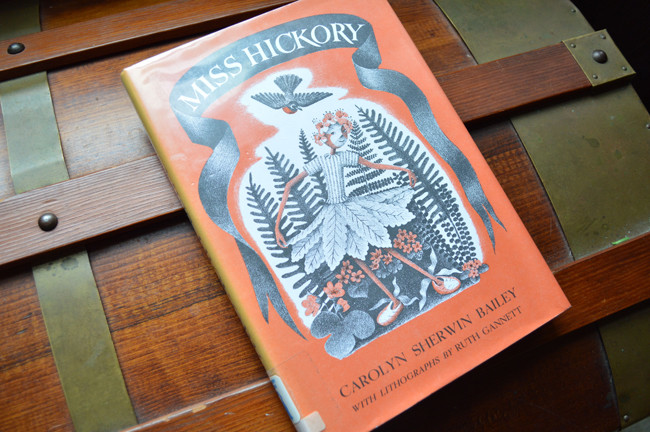
The 26th Newbery, Carolyn Sherwin Bailey’s 1947 Miss Hickory, is a quirky, but fairly charming, tale of a wooden doll’s extraordinary year when her little girl moves away, a chipmunk takes over her home, and she’s forced to fend for herself in the great New England woods.

Similarity to other Newbery winners: Wait, you say, didn’t we already have a story about the adventures of a wooden New England Doll? Yes, we did: Hitty Her First Hundred Years. They are, on the whole, however, pretty different stories of New England wooden dolls. Hitty travels to India and becomes a pagan idol and upon her return to the states takes the reader through a chunk of American history from the Revolution to the Civil War to the automobile.

Miss Hickory is considerably more bucolic, similar to Rabbit Hill in its assortment of farm and forest animal characters, a nine month span from late summer to early spring, and has, on the whole, considerably more character development since we stay with one set of characters for more than a chapter at a time.

What was interesting: The strangest part of Miss Hickory was the ending. [Spoiler Alert] Miss Hickory, through the whole story, has been a bit hesitant to try new things and to trust her new friends. This hard-headedness is metaphorical but also literal—she has a hickory nut for a head. And her head eventually leads her to a run-in with her on-again, off-again friend of a neighbor, Squirrel, who in a moment of early spring starvation, eats her hickory nut head. Miss Hickory, whose body is made of apple wood, is now free from her logical and cynical hickory head, so she wanders aimlessly until she climbs an apple tree and grafts herself into the tree, causing the whole tree to bloom with new life.
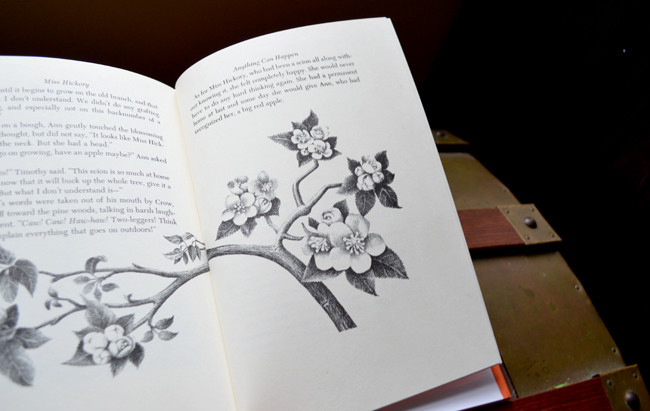
What were some limitations: On the one hand, having the main friendship in the story end in the Squirrel eating the protagonist’s head and a headless doll wandering around until she gets grafted on a tree is, frankly, really weird. But on the other hand, there was a real beauty in the grafted tree’s blooming and in Miss Hickory finding a home and a purpose. I am probably biased because I really like trees and tree metaphors. The ending was certainly unexpected.
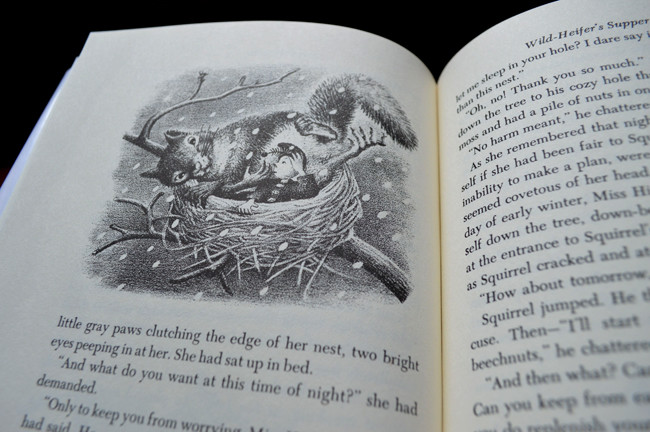
What I liked: The illustrations and the descriptions of Miss Hickory’s clothing and house and friends were one of my favorite parts of the book. I love little fairy gardens and petal dresses and cozy nest images. Ruth Chrisman Gannet did the illustrations, and she was the illustrator for one of my all-time favorite children’s books: My Father’s Dragon.
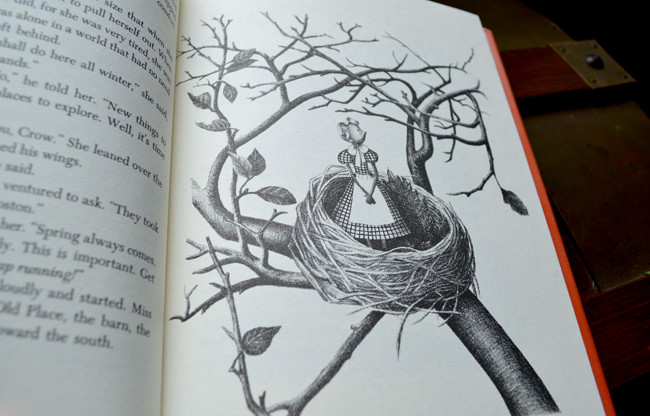
What it teaches me as a writer. My enduring memory of this book (since I, in fact, read it back in February, but morning sickness put a hiatus on these Newbery posts) is that last image of blooming apple tree. I think that speaks to the ability of a few powerful images (even if they are a little weird) to stay with readers.
Have you read Miss Hickory? What are your favorite books with unexpected endings?
*Note* This post contains Amazon affiliate links, which means if you were to buy a book, I’d get a tiny commission at no cost to you. Thanks for supporting Stories & Thyme!*


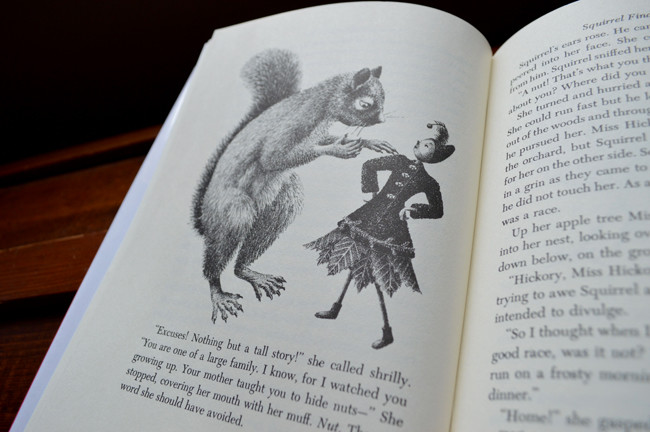
I am glad you are reviewing the Newberry books again. I had never heard of this one. It certainly seems strange. I read recently of the newest Newberry winner. I do not recall the title, but the book is written in verse.
We look forward to seeing you soon.
Anne